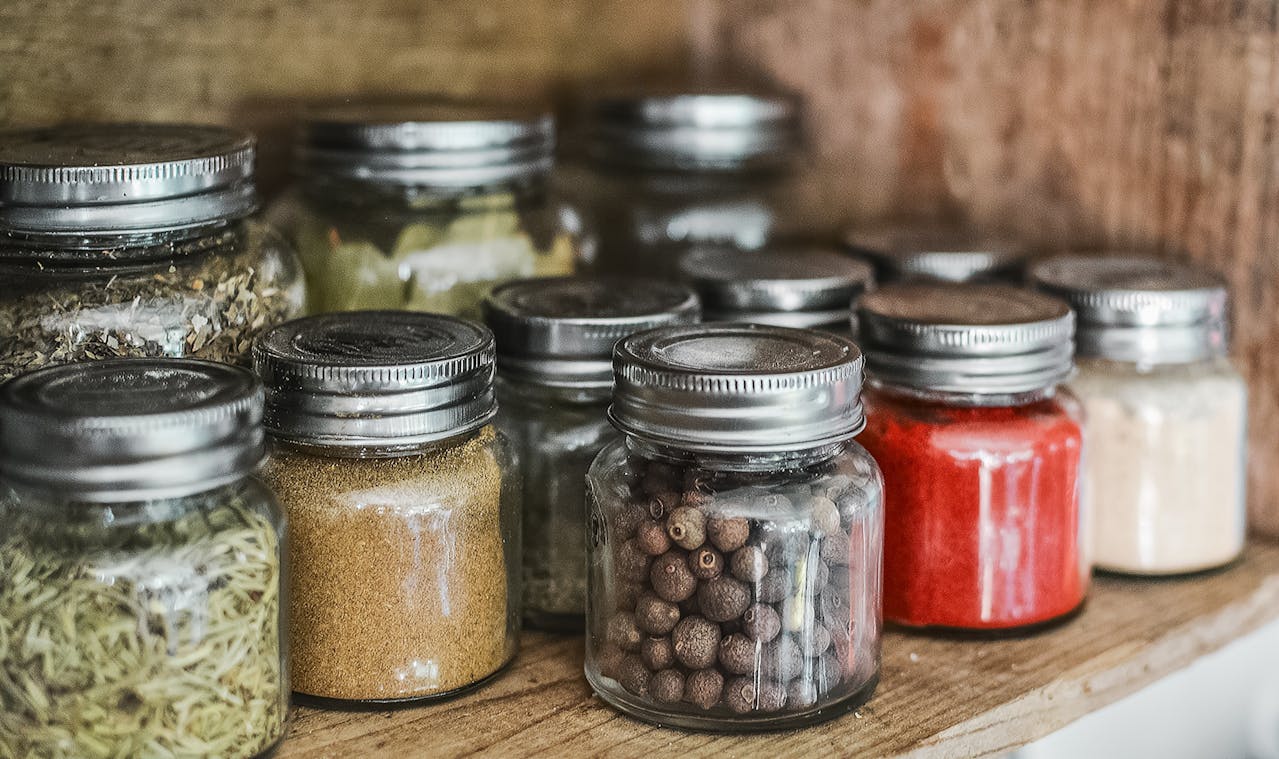In the quest for healthier eating and living, your kitchen plays a pivotal role. It’s the place where you prepare your meals, experimenting with flavors and textures to create a balanced diet that nourishes your body without compromising on taste. Essential to this effort are various spices, which not only add a burst of flavor to your foods but also contribute to your health and wellbeing. What’s more, they can help you create delicious meals without the need for excessive fats or oils, rendering them ideal for anyone who’s calorie-conscious.
Spice up your cooking with health-boosting spices
Spices have been used for centuries to enhance the flavor of meals and impart therapeutic properties. Packed with potent phytochemicals, they can help reduce inflammation, boost metabolism, and contribute to overall health.
Also to discover : How does the choice of kitchen wall art influence food cravings?
Turmeric, for instance, is renowned for its anti-inflammatory and antioxidant properties. A staple in Indian cooking, it can add a vibrant yellow hue and a warm, earthy flavor to your meals. Garlic, too, is a powerhouse of health benefits. It’s known for its antibacterial properties and its ability to support heart health, among other benefits.
Other spices you should have in your kitchen include cinnamon, which can help regulate blood sugar levels, and cayenne pepper, which can boost your metabolism and aid weight loss.
Also read : What are the best DIY tools for creating custom, slim-friendly kitchen storage?
Incorporating these spices into your diet doesn’t have to be complicated. You can add them to your soups, stews, and stir-fries, or use them as a rub for meat or fish. They are also an excellent way to add flavor to your vegetables, making them more appealing and enjoyable to eat.
Use spices to reduce your fat and oil intake
The use of spices in cooking isn’t just about boosting your health. They can also be a useful tool in reducing your intake of fats and oils, which can help keep your calorie count in check. Many recipes call for a significant amount of oil or fat to enhance the taste, but with the right spices, you can achieve the same, if not better, results with less.
For instance, instead of frying your vegetables in oil, you can steam them and then sprinkle them with spices such as paprika, cumin, or coriander. This way, you can enjoy their natural flavors, enhanced by the spices, without the extra calories from the oil.
Spices like chili powder and black pepper can also add a kick to your meals, reducing the need for unhealthy condiments such as mayo or ketchup, which can be high in sugar and calories.
Meal planning with spices
Meal planning can be a game-changer when it comes to maintaining a healthy diet. It allows you to ensure that you’re eating balanced, nutritious meals which are in line with your dietary goals.
When planning your meals, consider the spices that will complement the foods you’re cooking. For example, rosemary pairs exceptionally well with chicken and potatoes, while thyme is perfect for fish and seafood.
Consider also the health benefits of the spices you’re using. If you’re trying to reduce your sugar intake, for example, adding cinnamon to your meals could be beneficial. Similarly, if you’re looking to boost your metabolism, cayenne pepper could be a good choice.
Mastering the art of spiced cooking
While using spices can enhance the flavor of your meals and contribute to your health, it’s essential to understand that each spice has its unique characteristics. Some spices, such as chili powder, can be quite potent and should be used sparingly, while others, like coriander, are relatively mild and can be used more liberally.
In the same vein, some spices work well together, while others may clash. A good example is the classic combination of cumin, coriander, and turmeric, often used in curries. On the other hand, combining too many strong spices, like cayenne pepper and black pepper, can result in an overpoweringly hot and spicy dish.
Lastly, remember that cooking should be a joy and a journey of discovery. Don’t be afraid to experiment with different combinations of spices to find what works best for your palate and your health. Just always keep in mind that spices are your allies in the quest for healthier, tastier, and more calorie-conscious cooking.
Incorporating Spices into Slow Cooker Recipes
In the world of calorie-conscious cooking, the slow cooker has become a staple for many. It’s an excellent tool for preparing healthy meals that are flavorful and satisfying. A key component of these recipes is often the effective use of spices.
When using your slow cooker, remember that the long cooking process can dull the flavors of some spices. This means you might need to add more spices than you would in a recipe cooked on the stove or in the oven. Spices like cayenne pepper, turmeric, and cumin can withstand the slow cooking process and release their flavors slowly over time, infusing your meals with a rich and nuanced taste.
To ensure the best flavor, add your spices at the right time. More robust spices can be added at the beginning of the cooking process, while more delicate spices, like coriander, might be better added towards the end of the cooking process to retain their flavor. This method not only enhances the taste of your food but also maximizes the health benefits of the spices.
Also, be mindful of your liquid levels when using a slow cooker. Too much can dilute your spices, while too little might lead to a dry or burnt meal. The right balance allows the spices to adequately infuse your food without overpowering it.
Spices for Health and Weight Loss
The journey of healthy eating extends beyond just calorie counting. It also involves being aware of the nutritional and health benefits of what you put in your body. Spices do more than just enhance the flavor of your meals; they can also offer significant health benefits.
For example, certain spices can aid in weight loss. Cayenne pepper is known for its ability to boost metabolism and promote satiety, reducing calorie intake. Turmeric, with its anti-inflammatory properties, can help combat obesity-related inflammation.
Spices can also help manage blood sugar levels, which is particularly beneficial for those with diabetes or pre-diabetes. Cinnamon is a great spice for this, as it has been shown to help reduce blood sugar levels and increase insulin sensitivity.
Additionally, many spices can help reduce blood pressure. For instance, garlic has been found to have significant blood pressure-lowering effects. By integrating these spices into your diet, you’re not only improving the taste of your meals but also contributing to your overall health.
Conclusion
Your kitchen is your sanctuary for healthy eating, with spices being the magic ingredient that adds flavor, health, and life to your meals. Whether you’re seeking to reduce your calorie intake, manage your blood sugar, lower your blood pressure, or just enjoy the diverse flavors that spices offer, your spice rack can be an invaluable tool.
Remember that cooking is an art, and spices are your palette. Don’t be afraid to experiment with different combinations, to find what works best for your palate and your health. Whether it’s the vibrant yellow of turmeric, the heat of cayenne pepper, or the sweet hint of cinnamon, let the world of spices inspire your culinary adventures. And as you continue your journey towards healthier, leaner, and more flavorful cooking, let the spices in your kitchen be your guide and your ally.






